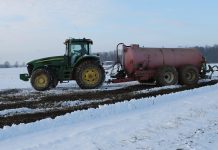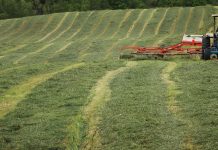
Fall is a great time to control perennial and biennial weeds, which are often the most problematic in pastures and hayfields. As these plants approach the fall, they are actively moving energy reserves to the root system to prepare for the following spring’s regrowth.
Applying systemic herbicides at this time of year results in better weed control as the products are translocated into roots or rhizomes along with the sugars. This typically results in better control than applying herbicides while the plants are actively growing during the spring.
Before using any chemical control measures, it is important to correctly identify what weeds you are dealing with. Perennials, biennials, summer and winter annuals each have a different ideal time for an herbicide application.
They are several apps and online resources to help correctly identify weeds. Your local extension office will have helpful resources as well.
Toxic weeds
Proper identification is especially true for some of our poisonous weeds. The potential for livestock poisoning depends upon how many plants are in the field, stage of growth, time of year and specie of livestock. More often poisoning occurs in drought years when other forages are limited.
Poison hemlock is one in which all parts of the plant are poisonous; cattle have been fatally poisoned if they consume 0.5 – 4.0% of their body weight of green hemlock. This is the most toxic plant we have in North America; it is a biennial and is best controlled with an herbicide treatment in the fall while the plant is in the rosette stage.
Another weed that has toxic effects to livestock is cressleaf groundsel. This plant emerges early in the spring and has a bright yellow flower. Commonly we see this plant very early in the spring growing in fields prior to being cultivated for corn or soybeans.
This weed can be especially problematic in new seedings of forages when converting a field from cereal grains. So, if you planted forages this spring or have recently, please scout your fields for this weed. Many fields were late getting planted this spring which allowed cressleaf groundsel to produce mature seed. Both poison hemlock and cressleaf groundsel remain toxic if baled.
Read the label
If herbicides are going to be used, always read the label. For herbicide recommendations, you can consult the 2022 Weed Control Guide for Ohio, Indiana and Illinois, which is available at county extension offices and can be downloaded as a PDF online. Other states also have agronomy guides that are updated yearly.
Make sure you are using herbicides approved for your area, and always follow label directions. These guides are excellent resources with herbicide response rates for each herbicide and individual weeds. They also contain additional information on grazing or harvesting restrictions, slaughter withdrawal times, application rates and control options for problem weeds.
Effectively controlling weeds in pastures can be accomplished maintaining proper soil fertility, mechanical, chemical, and possibly biological measures to maintain highly productive forages along with animal performance. Good pasture management and integrating several control strategies will be more successful than relying on one single method.












